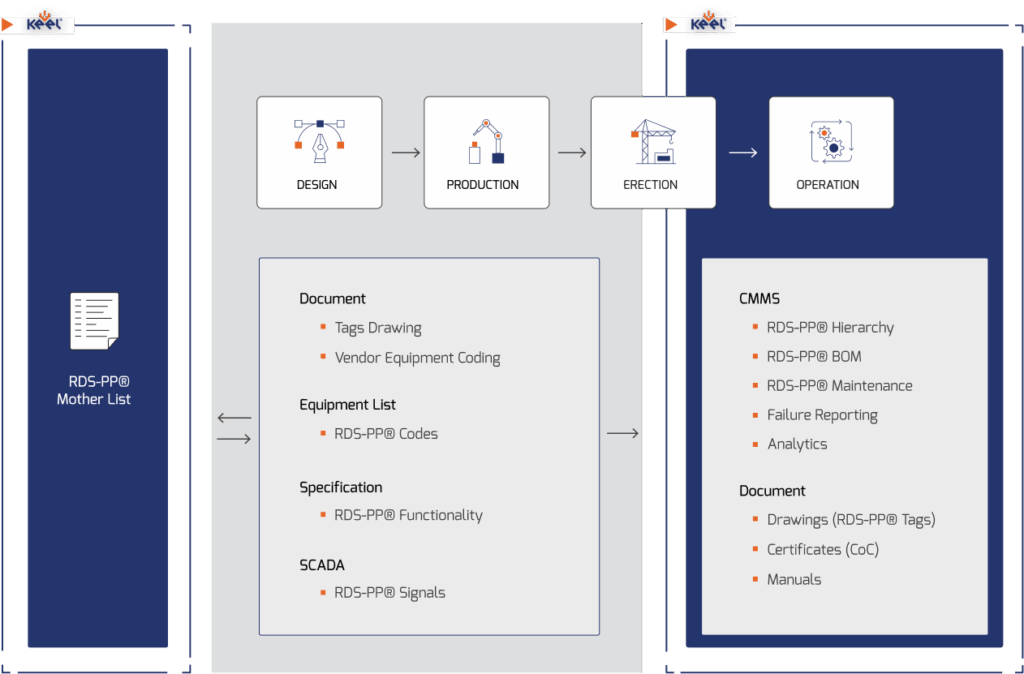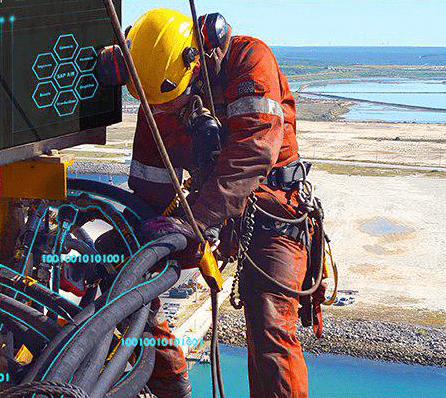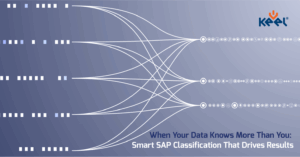RDS-PP® (Reference Designation System for Power Plants)
RDS-PP® Importance in the Windpower Industry
RDS-PP® (Reference Designation System for Power Plants) is the designation language that is applied in the wind industry worldwide. Today, most modern wind farms are looking to align with this system, due to the Machinery Directive ISO 81346. RDS-PP® is a systematic plant designation that has been developed for the efficient construction, operation, and maintenance of wind power plants. Application guideline Part 32 is designed specifically to fill gaps in international designation systems for wind-based electricity generation plants.
During the lifecycle of a wind power plant, different people work on the same component. Therefore, it is essential to provide a designation for each component that is unique during its lifetime, including the planning phase, engineering, procurement, erection, commissioning, documentation, operation, and maintenance.
RDS-PP® is a powerful and versatile way to create equipment hierarchies, design and develop wind farms, and create a simplified, ready-to-use structural hierarchy. The designation according to RDS-PP® is carried out in a hierarchical structure, starting with a complete wind power plant and ending, e.g., with a single circuit breaker in a control cabinet.
It has to be taken into consideration that each hierarchical level (group of systems, system, group of elements, element) represents a separate object. It gets its own designation, which is delivered from the higher designation level.
The object itself and its hierarchical level can be easily identified with the help of its designation.
RDS-PP® uses a prefix-based classification system to classify objects such as:
- Equipment and materials
- Documents
- Terminals
- Signals
In addition, RDS-PP® standardization simplifies communication with third-party and outsourced companies, helps boost business intelligence, and shortens training time for new workers.
Keel Concept
Over the last 10 years, Keel was heavily involved in the implementation of the RDS-PP® standard for the energy sector, with the primary focus on:
- Initial development of the RDS-PP® codes (mother list) and their implementation into the Company’s landscape;
- Implementation of the RDS-PP® into the Operational department.
The concept that is suggested by Keel also covers the Design and Production phases in an Asset’s Lifecycle. This will help to streamline the Asset Management processes and will give a much better overview of the asset history.

RDS-PP® Mother List
Keel has developed initial RDS-PP® designation codes that reflect the functionalities of customer assets and can be applied to all assets, aligning the same configuration and functionality.
Mother List is an essential part of the RDS-PP® implementation process, which helps to:
- Keep track of the configuration of the assets.
- Provide the same maintenance to identical equipment in different assets.
- Perform a Reliability study and optimize stock requirements.
RDS-PP® and Design, Production, and Erection Phases
Clear, consistent, and unique designation of each component during the life cycle is essential.
In order to avoid double meanings and inaccurate functional assignments, it is important to implement RDS-PP® from the Design phase.
Keel has experience in consistently following customer implementation guidelines and VGB recommendations.
RDS-PP® and Operational Phase
RDS-PP® Hierarchy. Asset Functional structure that consists of an applicable selection of RDS-PP® codes from the mother list. Operation Hierarchy includes only essential functions related to the Operation & Maintenance campaign of a particular Asset.
RDS-PP® BOM. RDS-PP® codes, which represent the key functionality of an asset, can be represented by particular products that fulfill those functions – RDS-PP® BOMs. During the Operation, these BOMs are used as service BOMs, representing the list of spare parts and consumables that are required for maintenance and repair jobs.
RDS-PP® Maintenance. Having implemented RDS-PP® across the Company’s assets, it’s important to align the maintenance tasks and requirements across the company, where the same Functionality / System (RDS-PP® code) is maintained in the same way and is tracked from one maintenance repository (maintenance library).
Failure Reporting and Analytics. To provide a standardized language for the collection and exchange of reliability and maintenance data for equipment, Keel recommends implementing a combination of RDS-PP T32, ISO 14224, and ZEUS FGW e.V.
RDS-PP® Documentation. Implementation of RDS-PP® standards also involves applying RDS-PP® codes to Technical documentation, like Drawings, Manuals, 3D Models, and Maintenance / Troubleshooting instructions.
RDS-PP® service specification:
Read more about our RDS-PP® and ERP services:
RDS-PP® Wizard
Smart solution for assignment of RDS-PP® codes.
Read more about our services for the windpower industry.
We are ready to help!
Request consultation, ask a question or share your feedback. Just get in touch!





